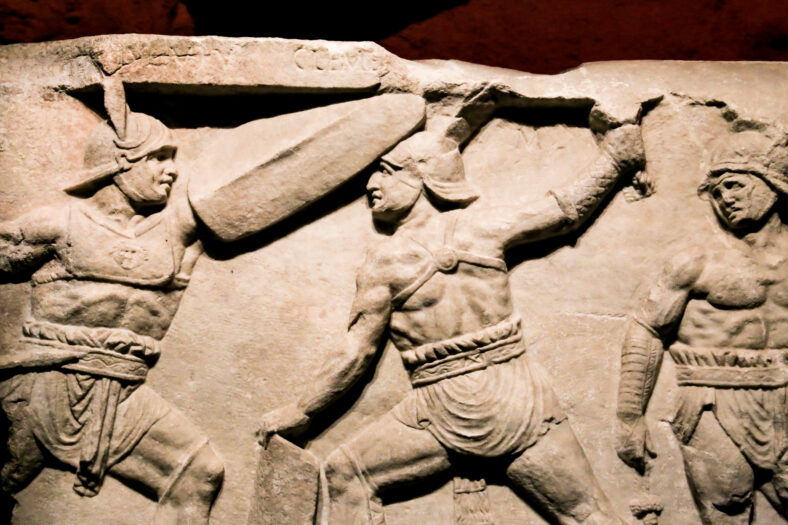Bite Marks And Carnage: First Physical Evidence Of Gladiator Animal Fights Found In Europe

If you look at Roman texts and artworks, you’ll see a lot of depictions of gladiators fighting each other or wild animals to entertain the crowd of observers in amphitheaters. But since the Romans usually cremated their dead, very few gladiator bodies have been found.
Now, researchers have discovered the first physical evidence of gladiators fighting animals in Europe. They found bite marks on the skeleton of a strong, young man that were likely made by a lion.
The research team reexamined a set of human remains uncovered in 2004 at a site called Driffield Terrace, located near York in northern England.
At the time, archaeologists dug up more than 80 skeletons from between the 1st or early 2nd century C.E. to the late 4th century C.E.
Almost all of the bodies belonged to men who ranged from the ages of 18 to 45. They came from different parts of the Roman Empire. The remains showed signs of serious injuries, and many of them had been decapitated.
The Romans knew York as Eboracum. Between 71 C.E. and 400 C.E., it served as an important military outpost and city in northern Britain, which they called Britannia.
The team believes Driffield Terrace was a cemetery for gladiators. They recently decided to take another look at a skeleton with strange marks on its pelvis. They used modern forensic techniques to study the remains and made 3D scans of the marks.
They also worked with zoos around England and got their hands on bones that had been chewed by lions, tigers, cheetahs, and leopards in captivity. They made 3D scans of these bones as well.
Then, they compared the marks on the gladiator’s skeleton to those on the zoo bones, confirming that the gladiator had been bitten by a big cat, most likely a lion. However, big cats tend to bite their prey’s neck or head.

Sign up for Chip Chick’s newsletter and get stories like this delivered to your inbox.
“We think this gladiator was fighting in some sort of spectacle and was incapacitated, and that the lion bit him and dragged him away by his hip,” said Tim Thompson, the lead author of the study and an anthropologist at Maynooth University in Ireland.
The bite marks seemed to have occurred around the time of death, indicating that the animal was not just scavenging after the individual died.
The man’s head was cut off to either end his suffering or to follow tradition. After he died, he was laid to rest in a grave with two other individuals. The burial site was then covered with horse bones.
So far, an amphitheater has not yet been discovered in York, but one could be concealed somewhere beneath the historic city. It’s not surprising that gladiator battles took place in Eboracum due to its importance.
The gladiator’s skeleton is now on display at a museum in York called DIG: An Archaeological Adventure. The new research was published in PLOS One.
More About:News





